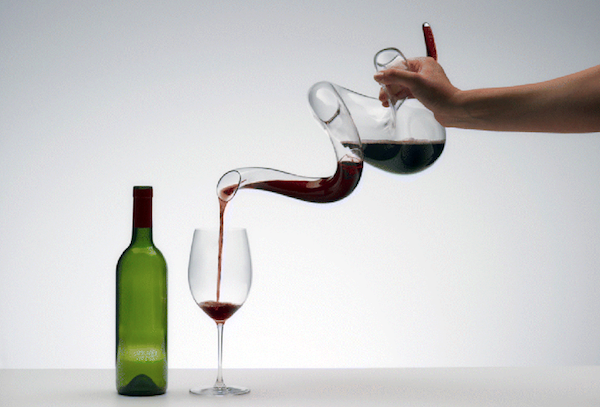
[Image above] Credit: Riedel; The Glass of Wine
If you’re a wine enthusiast like I am, you can understand that there’s no way wine should be consumed in a container made of anything but glass. And not to sound high-maintenance, but can you really experience the full flavor and bouquet of the wine you’re tasting with one of those cheesy plastic glasses they give you at some wine tastings? I mean, what’s the point?
Glass is really the only material that should be paired with wine.
A new book, The Glass of Wine, by James and Penelope Shackelford, takes a deep dive into the glass and wine industry, covering the history, materials, and science of glass and winemaking. It’s obvious the authors have done their homework. They’ve taken two related subjects, mixed in a lot of science, and poured out a composition that takes you through the entire wine experience, from a historical perspective through winemaking itself, materials used in drinking and bottling, and down to the stemware and the cork.
James is a glass scientist from the University of California, Davis. He holds a Ph.D. in materials science and engineering from University of California, Berkeley. Penelope, a former teacher, art curator, and gallery owner, is a journalist and blogger with a master’s degree in arts and consciousness from John. F. Kennedy University. Together they have traveled to major winemaking regions of the world to conduct research for this book.
Read on for some of the highlights plus a few fun facts from The Glass of Wine.
The first several chapters offer a general overview of the book, with an introduction to glass, its history, and the science of glass. Did you know that North American manufacturers produce 40 billion glass containers annually, representing 15% of the beverage market? And nearly 100% of the wine market uses recyclable glass containers for their product.
The authors provide a short history of winemaking and the vessels that people of ancient civilizations used to store and drink wine before glass was even invented. A chapter that details the history of glass and its role in the wine industry follows, interspersed with a little bit of science—including a 2-D graphic of silicon dioxide that illustrates the difference between a crystal and a glass. In a nod to another ceramic material, a subsequent chapter on winemaking mentions concrete, used in fermenting tanks that some winemakers believe offer a superior fermentation process to stainless steel.
Did you know: The most important development in glass technology (after the discovery of glassmaking itself) was the invention of the blowpipe by Phoenicians around 200 BC? (page 30)
The Shackelfords devote several chapters to the science of glass itself: Glassmaking today, the reasons why glass breaks, and why glass is transparent. These chapters are full of formulas, equations, and terms that only a glass scientist would appreciate.
Did you know: Transition metal ions contribute to producing the color in glass? (page 84)
The last several chapters in the book focus on form and function—why wine bottles and glassware are shaped a certain way, improving the quality with aerating and decanting, and the continuing debate about sealing the bottle: cork, plastic, or screw cap? I personally was fascinated to learn why the cork of a champagne bottle is flared at the bottom. (Spoiler: It has to do with interior pressure.)
Did you know: The deep indention on the bottom of a wine bottle is called the punt? (page 123)
The authors wrap up the book with a final discussion on beverage containers. They do note that some wineries are using plastic wine bottles with limited (understandably) consumer acceptance.

Credit: Wiley
A bibliography of references follows each chapter for further reading. And scientists, this is for you: The book wraps up with an appendix that covers primary bonding in detail—ionic, covalent, and metallic bonding.
The Glass of Wine is a compelling read for wine aficionados and scientists alike. Even the non-scientist will understand basic glass concepts mentioned throughout the book.
As for me, I’m suddenly in the mood to drink some wine. In a glass, of course.
You can get a sneak peek of the first 11 pages here. To order The Glass of Wine, visit Wiley’s website over here. Remember, too, ACerS members get a 35% discount by entering the promo code CERAM. The book, with a nice bottle of California wine, would make a nice gift for the materials scientists on your list!
Did you find this article interesting? Subscribe to the Ceramic Tech Today newsletter to continue to read more articles about the latest news in the ceramic and glass industry! Visit this link to get started.
